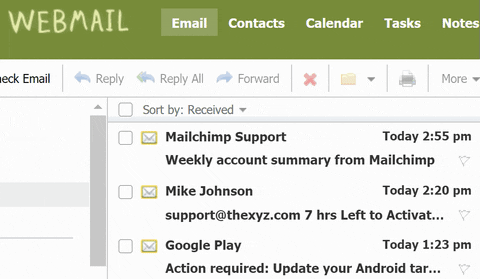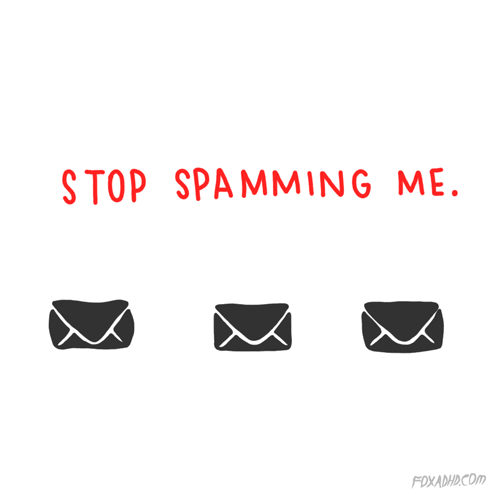Email Marketing Guide & Mailer Examples For Email Campaigns
Email Marketing and Its Importance
What is Email Marketing?
Email marketing is an effective strategy that involves sending targeted, personalized emails to both existing and potential customers. This approach is used to promote a company’s products or services, announce new offerings, provide updates, or offer exclusive promotions—all directly to the user’s inbox. A well-executed email marketing campaign delivers a clear call-to-action, using email marketing tips like adding links to product pages and incorporating social proof to encourage customers to take certain actions. Whether it’s making a purchase, joining a rewards program, or visiting web pages of the company’s website or online store, it’s about fostering engagement and boosting conversions.

Why Use Email Marketing?
Email marketing is a powerful tool for businesses for numerous reasons. It’s an excellent channel for the acquisition of both existing and potential customers, and for maintaining seamless communication with them through regular or automated follow-up emails. This keeps them updated with the latest offerings and news about your company.
Beyond engagement, email marketing is a cost-effective strategy that provides a high return on investment (ROI), making it an ideal prospect for businesses of all sizes. Furthermore, email marketing campaigns are equipped with quantifiable pros, offering measurable results. You can track various key performance indicators (KPIs) such as open rates, click-through rates, and can use these metrics to assess the conversion rate of acquired customers. Understanding these metrics helps you accurately assess the effectiveness of your paid acquisition campaigns and continually refine your strategies to achieve better outcomes.
The Basics of a Successful Email Campaign
Knowing Your Audience
Knowing your audience is a fundamental step in constructing an effective email marketing campaign. It is essential to remember that your emails should primarily serve your customers and not just market your brand. Therefore, it becomes crucial to understand who your customers are, including their job, age, ethnicity, preferences, and habits.
You can gather this vital information via surveys, interviews, and market research — the more specific, the better. The knowledge you gather should help you fine-tune your communication to target specific segments with personalized emails that speak directly to them and tackle their unique needs and preferences.
Establishing a Clear Objective
The success of your email marketing campaign largely depends on establishing a clear objective. From promoting a new product or service to following up on an abandoned cart event or even staying top of mind with your audience — different email campaigns serve different purposes and consequently require specific strategies.
The first step to defining your campaign’s goal is asking yourself what you want to achieve. Is your aim to drive sales, find potential customers, nourish existing ones, or is it specifically to retain old paying customers? Pinpointing this primary objective will guide your actions throughout the entire campaign process.
However, one common goal within all email campaigns should be to fortify customer relationships. This ongoing connection lays the foundation for long-term results. The strategy needn’t focus solely on driving immediate conversions but also consider providing value to the recipient, such as unique insights, useful tips, or exclusive offers.

Crafting the Perfect Email for Your Campaign
Writing Click-Worthy Subject Lines
Your email’s subject line is akin to the storefront of a shop — it’s the first thing recipients notice and interact with before deciding whether to move forward. An astonishing 35% of email recipients open emails based on the subject line alone, according to a study by Convince & Convert. Hence, cranking out a compelling subject line is vital to your email campaign’s success.
Here, your goal is to pique interest, promise value, and spark curiosity. The subject line should be a teaser to the email’s content enticing the recipient to open and engage with it.
Employee personalization to make your subject lines resonate more with the recipient. Studies show that personalized email subject lines yield 50% higher open rates. “John, Check Out Our New Arrivals!” would be far more captivating than a simple “Check our new products.”
Adding urgency and scarcity, using phrases like “Limited Time Offer!” or “Sale Ends Tonight!”, tends to compel people to act quickly and increases the chance of conversion. An experiment by Worldata noted a 22% increase in emails opened with subject lines that instilled a sense of urgency.
Remember to keep your subject lines concise yet intriguing. Overly long subject lines might get cut off on mobile devices, which represent over 46% of all email openings.

Prioritizing Content Engagement Over Features
When crafting an email for your marketing campaign, prioritizing content engagement over simply listing features is essential. Remember, not all content is engaged equally. What engages your audience isn’t how many features your product or service has but how it benefits and simplifies their lives.
Let’s face it — your subscribers may quickly lose interest in the content overloaded with details about features. So, the key here is to leverage storytelling. Narrative-led content encourages subscribers to visualize how they can use your product or service in their lives. Think about your buyers’ journey, their pain points, and how your offerings can address these issues.
Use strategic CTAs to heighten engagement. A clear, well-placed CTA entices your readers to find out more about you, your product or service, advancing them along the sales funnel. In addition to this, invite users to share your content, hence leveraging the power of social proof.
Utilizing Images and Icons
Visual content has a significant impact on how recipients perceive and interact with your emails. A well-placed and relevant image can make your message more memorable. Consider the campaign by Spectrum, which included a scannable image to play a message when the piece is scanned. This clever use of images adds an interactive element to the email, boosting engagement.
Icons can also be extremely effective. These small symbolic images are a powerful tool to direct user behavior. Icons can make your CTAs more prominent and intuitive – for instance, a ‘cart’ icon indicating ‘add to cart’, or a ‘download’ icon for downloadable content.
However, be mindful not to go overboard with the visuals. Not everyone has high-speed internet, so if your email takes too long to load due to heavy images, you risk losing recipients’ interest. Always ensure your visuals are optimized for both desktop and mobile devices, as a significant chunk of emails nowadays are opened on mobiles.
Enhancing Connectivity with Personalization
Implementation of Personalized Elements
The implementation of personalized elements is no longer just a ‘nice touch’ in email marketing; it’s expected. Personalization goes beyond the simple ‘First Name’ approach. It includes customizing email content based on behavioral data, demographic data, location, and past purchases.
Personalization doesn’t stop at content, subject lines, or salutation. It extends even to the email-sending time. For instance, if your emails usually get opened at noon or during commuting hours, make sure you send your future emails around those times. Sending the right email at the right time increases the likelihood of it getting opened and the reader taking the intended action.
Incorporating Handwritten Notes and Personalized Maps
Adding handwritten notes and personalized maps to your email marketing campaigns can drastically elevate their impact and foster a more significant connection with your audience.
In an era where personal connection often gets sidelined, incorporating a handwritten note in an email can make anyone feel special. As simple as it may sound, this unique touch can get your email noticed amidst the crowd of digitally typed ones. These notes, tend to communicate a vital message — “You matter to us”. Such gestures help boost brand loyalty and create a deeper connection with potential customers.
For businesses with large mailing lists who see handwriting as a time-consuming endeavor, consider using a custom stamp. These stamps give the semblance of handwritten text, adding a personal, premium feel to your direct mail.

Standout Strategies for Effective Emails
Incentive Driven Campaigns (Discounts, Gift Cards, Special Offers)
Incentive-driven campaigns—utilizing discounts, gift cards, and special offers — are a powerful strategy to increase customer engagement and drive sales. According to Hawk Incentives research, 97% of consumers are motivated to make a purchase with a coupon or discount, while 89% of millennials would switch brands based on receipt of a discount offer.
- Discount deals: Consumers love saving money. Offering a discount on a product or service is an excellent way to not only attract new customers but also reactivate old ones. The added bonus is that promotions are easily trackable and can provide valuable metrics to measure your campaign’s success.
- Gift Cards: These bonuses act as a cash incentive for buyers. They can be conveniently kept in a wallet as a constant reminder of your brand and are usually spent over their monetary value, increasing sales.
- Special Offers: Limited-time promotions add urgency, driving users to your website and nudging them to make purchase decisions more quickly. “A week-long -50% sale” or “free shipping” are excellent examples of this kind of incentive.
Setting Up Auto-Replies or Welcome Emails
Welcome emails or auto-reply emails are critical for creating a positive first impression and starting a fruitful relationship with your subscribers. According to data from GetResponse, welcome emails enjoy an impressive open rate of 82%.
The goal of these emails is to thank subscribers for joining your email campaign. They may also include links to your website or social media platforms but don’t necessarily need to contain a direct call to action. Welcome emails serve to show users that you appreciate them taking the time to join your email list and convey the impression that you value their presence.
The timing of your welcome emails can vary depending on your business model. Some companies prefer to send a welcome email immediately after a user subscribes, while others wait a few hours or even a day. A study from GetResponse suggests that sending the welcome message within the first 48 hours can increase open rates by 40% over emails sent later.
Developing Re-Engagement Tactics
Over time, some subscribers may stop interacting with your emails. They become “inactive” but hold potential value, making their lack of engagement a hurdle to overcome. Re-engagement emails are an effective strategy to recapture these subscribers’ attention, and when done right, they can improve open rates, clickthroughs, and conversions.
In these emails, consider asking your consumers for feedback, check in with them to ask if they still want to remain on your email list, or even incentivize their activity with exclusive offers.
Developing re-engagement tactics ensures a clean, active email list and improves your email deliverability and engagement. These tactics should not be seen as a last-ditch effort; instead, they are part of an effective, ongoing email marketing strategy, aimed at sustaining long-term relationships and minimizing customer churn.

Common Mistakes to Avoid
Overcomplicating The Design: The Significance of Simplicity
While you may be tempted to dazzle your audience with a complex design or flood them with information, the venture into email marketing should always include simplicity as its companion. The significance of simplicity cannot be stressed enough; after all, an overcrowded email can confuse your recipient and dilute your message.
At the heart of simplicity is clarity. Keep your core message clear, your CTAs well-defined, and your design effortlessly scannable. The quicker the reader can understand what you offer and what they need to do next, the more likely they are to act on it. Remember, simplicity is not about making things basic, but about making things clear.
Ignoring Device Optimization
In our constantly connected world, people use multiple devices to interact with content. According to a report by Litmus, 41.9% of emails are opened on mobile devices which is why ignoring device optimization can severely undercut the success of your email marketing campaign.
Device optimization involves designing your emails to be easily readable and engaging on any device. Mobile users prioritize convenience and are likely to dismiss emails that are not mobile-friendly.
Lack of device optimization could lead to:
- Compromised readability
- Poor layout structure
- Images not loading or rendering properly
- Buttons and links that are too small to click
To ensure a consistent user experience, apply responsive email design. Responsive design automatically adjusts the layout, images, fonts, and other email components to fit the screen size of the device used to open it.
Neglecting Email Testing
Neglecting email testing could lead to undesired consequences, like incorrect formatting, broken links, or worst of all, your emails landing in spam folders. It’s crucial to test every aspect of your email – from the subject line to the sender’s name, the copy, images, and call-to-action (CTA).
Also, consider A/B testing or split testing as part of your email marketing strategies. This method allows you to send two variations of an email to a small portion of your audience, and the one with better performance (open rate or click-through rate) is sent to the rest.
FAQ: Unwrapping Doubts Related to Email Marketing
What time is best for sending emails to achieve maximum engagement?
Finding the optimal time to send your emails can significantly influence your open and click-through rates. However, the perfect timing depends on various factors, including your industry, target audience, and the geographical locations of your recipients.
Overall, research suggests Tuesday, Wednesday, and Thursday are the best days to send emails, with Tuesday generally seeing the highest open rates according to a 2020 Omnisend report. As for the time, CoSchedule compiled 14 data-driven studies and found that the best time to send emails is around 10 AM in the recipient’s local time zone. Additionally, sending emails in the early evening, around 8 PM, seems to work well.
That said, these are averages, and deciding the best times to engage with your audience will require monitoring their behavior and conducting timely tests. You should continually test and track your data to find the optimal times for your target audience. Some email marketing software provides heat maps that highlight when your subscribers open their emails, providing valuable insights to tailor your sending schedule.

How often should I send marketing emails?
Determining the frequency of sending marketing emails largely depends on your industry and your audience’s preferences. However, maintaining a delicate balance is crucial; sending too many emails can lead to unsubscribes, while sparse emails can lead to your brand being forgotten.
In essence, there is no guaranteed ‘right’ frequency for sending marketing emails that suit every business. The key is to continuously test, learn, and refine your strategy to discover the frequency that yields the best response from your audience. Respecting their choice for frequency reinforces their trust in your brand, ultimately leading to heightened customer loyalty.
What’s the best email marketing platform to use?
The best email marketing platform can differ based on a company’s unique requirements like the size of your customer base, budget, industry, technical expertise, and the current stage of your business. Here is a selection of some excellent tools available:
- HubSpot: This platform excels by seamlessly integrating with your website, allowing real-time updating of your customer database. It offers excellent segmentation, letting you target your emails based on dozens of criteria from your recipients.
- MailChimp: Known for its user-friendly design tools, MailChimp provides a wealth of customizable email templates. It also gives useful analytics and affordable pricing, especially for small businesses.
- Pabbly Email Marketing: A comprehensive tool that offers email scheduling, autoresponder, and fantastic customer segmentation capabilities. It also allows for SMTP routing, providing you with better email deliverability.
- Constant Contact: This platform offers a wide range of beautifully designed templates. Its standout feature is an event management tool, which is perfect if you host lots of webinars or live events.
- Omnisend: This platform is perfectly suited for e-commerce stores with its robust automation workflows. Its fantastic feature set includes cart abandonment emails, a customer segmentation facility, and advanced targeting.
Remember, while these tools are great, the success of your email campaign relies predominantly on strategy and content. Choose the software that aligns best with your needs and budget, but focus the most on perfecting your email marketing strategy, crafting the perfect content, and adjusting your approach based on your audience’s responses and behavior.
- Email Marketing Guide & Mailer Examples For Email Campaigns - January 4, 2024
- Shopify Plus Pricing: How much does it cost? Is it worth upgrading? - January 20, 2023
- A Comprehensive Guide to the Best E-commerce Platforms - September 24, 2022






